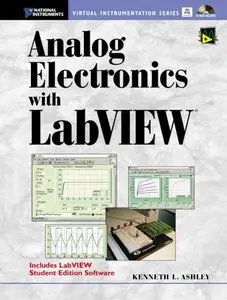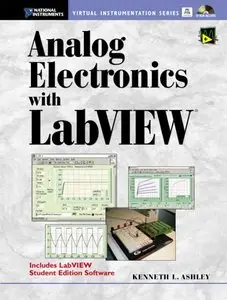Kenneth L. Ashley, "Analog Electronics with LabVIEW"
2002 | ISBN: 0130470651 | 410 pages | PDF | 7 MB
2002 | ISBN: 0130470651 | 410 pages | PDF | 7 MB
Analog Electronics with LabVIEW is the first comprehensive introduction to analog electronics that makes full use of computer simulation. Kenneth L. Ashley introduces analog electronics through a series of theory/project sections, in which theoretical presentations correlate directly with circuit measurement and analysis projects. The results of experiments are used to extract device model parameters used in subsequent electronic circuit analysis, providing a significant enhancement in the understanding of modern, computer-based electronic-circuit simulation. Readers will master not only the fundamentals of analog electronics, but also data acquisition and circuit simulation with LabVIEW, basic circuit-solution computation with Mathcad, and circuit simulation with Cadence Schematics or
Capture. Coverage includes:
- Elementary analog circuit analysis, including the resistor voltage divider and MOSFET DC gate voltage, MOSFET drain current-source equivalent, amplifier frequency response, and more
- Fundamentals of transistors and voltage amplification
- Characterization of MOS transistors for circuit simulation
- Common-source amplifiers, MOSFET source-follower buffer stage, differential amplifier stage, and MOSFET current sources
- Operational amplifiers: resistor negative feedback approaches and capacitor-based applications
- Development of a Basic CMOS Operational Amplifier
- LabVIEW tutorial with emphasis on analog electronics, the discrete nature of compute data acquisition, and LabVIEW measurement VIs such as the autoranging DC voltmeter
- Characterization of the BJT for circuit simulation including linear modeling
- BJT NPN common-emitter amplifier, including emitter degeneration and current-source PNP load with emitter degeneration



